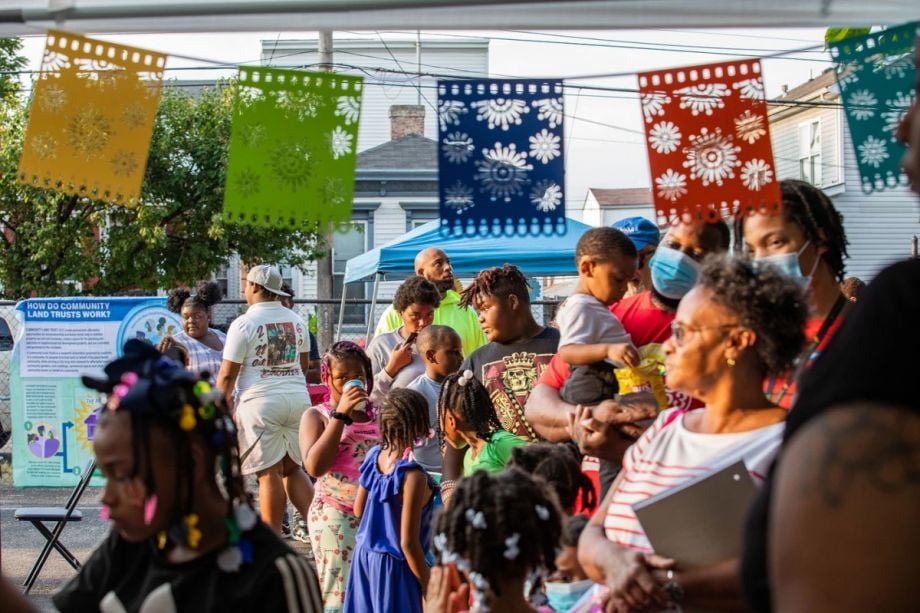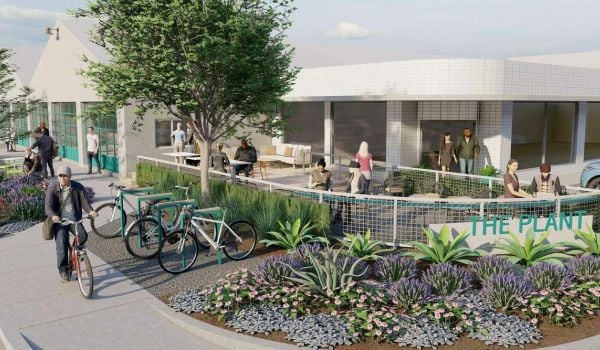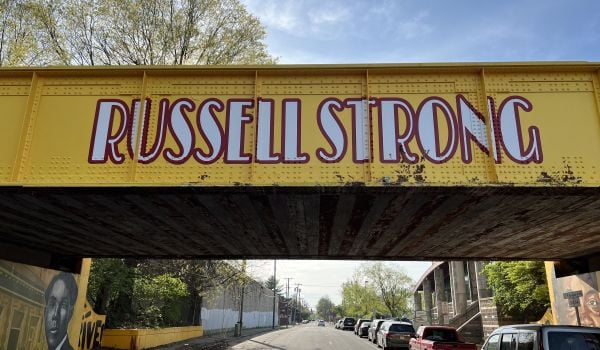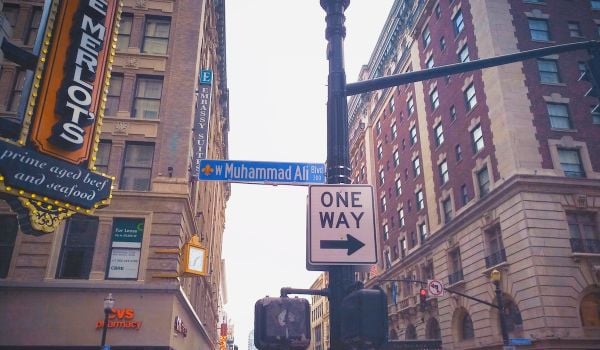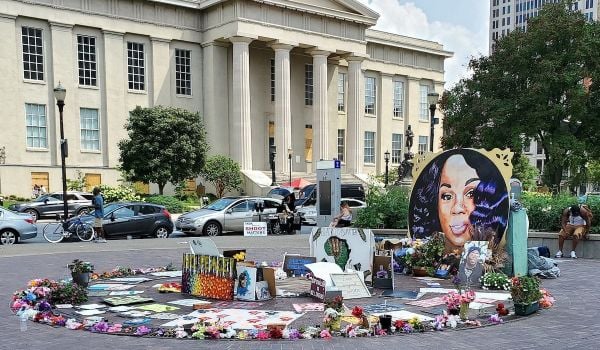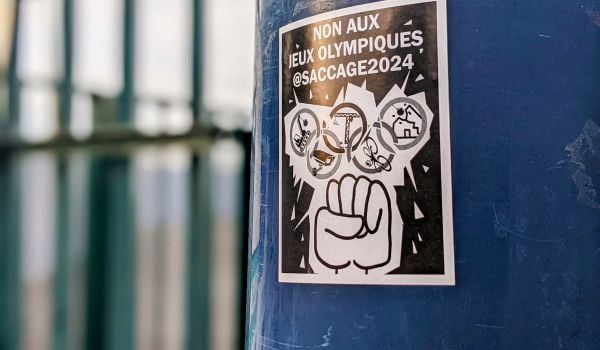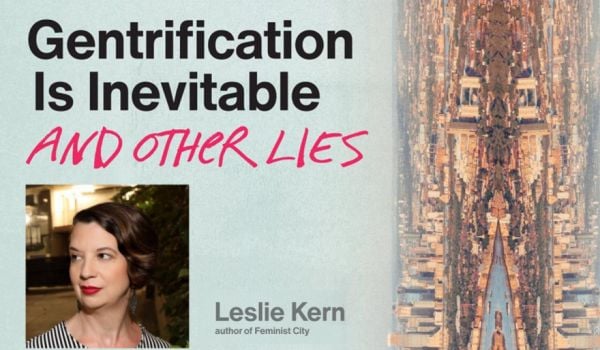Jessica Bellamy wants to stop paying almost a thousand dollars a year to help displace the community that shaped her as a child: Louisville’s historically-Black Smoketown neighborhood. That’s the current property tax bill for the camelback shotgun house her grandmother gifted her a few years ago. It’s the house where Bellamy spent part of her childhood, just steps from her grandmother’s soul food restaurant, Shirley Mae’s Cafe.
The restaurant, where Bellamy often took orders and served drinks over the years, is still hanging on as a neighborhood landmark. But like so many other homes in the redlined neighborhood, the house had gradually fallen into an unlivable state of disrepair.
“She didn’t want me to ever have to rely on another person for my housing ever again,” Bellamy says. “It was a really beautiful and great moment when she gave me the house, but the house at that point had been sitting vacant for about 16 years.”
If only some of her property tax dollars could come back to help renovate the house back into something livable. But Bellamy is one of a growing number of Louisville residents, mostly Black, who have come to believe some developers are instead using public dollars, public land and other Louisville government resources to build housing in Black neighborhoods that existing residents of those neighborhoods can’t afford. That, they have seen, in turn fuels speculation that leads other developers to raise rents on both residential and commercial properties near publicly-supported projects.
That’s why the Historically Black Neighborhoods Assembly, a chapter of the Louisville Tenants Union, has been leading the charge for the Historically Black Neighborhoods Ordinance, set for its first city council hearings later this month. The bill was designed with extensive input and feedback from members of the assembly.
The Historically Black Neighborhoods Ordinance does a few related things. At its core, it creates a new requirement that any development project in eight designated historically-Black neighborhoods must first pass an assessment proving it will not cause direct or indirect displacement of existing residents or businesses in order to receive any subsidies, discounted sales of public land or other Louisville Metro Government resources as defined in the bill. The Historically Black Neighborhoods Ordinance does not restrict permits or approvals related to development projects in designated neighborhoods. It only applies to those projects that wish to seek public resources in support of their development.
The Louisville Metro Office of Planning and Design Services declined to comment for this story.
It’s been over a decade since Bellamy started connecting the dots about what she believes public dollars in Louisville were doing to the city’s historically-Black neighborhoods like Smoketown. In 2012, as part of the HOPE VI federal program for redeveloping public housing, the Louisville Metro Housing Authority had just begun a $100 million project to tear down the former Sheppard Square public housing complex and replace it with a mixed-income development. Sheppard Square is just across the street from Shirley Mae’s and was home to many former regulars at the restaurant.
The plan was to give each occupied unit’s family a replacement home in the rebuilt Sheppard Square or somewhere nearby. It hasn’t quite happened yet; Louisville’s annual action plan for federal housing and urban development funds in 2023 still mentions additional outstanding HOPE VI replacement homes yet to be delivered as part of the Sheppard Square revitalization.
Meanwhile, the scores of new market-rate rental and for-sale units as part of the project were nearly complete by 2015.
To make matters worse, according to the Root Cause Research Center, which Bellamy co-founded, the off-site homes that were supposed to serve as replacement units under the Sheppard Square HOPE VI revitalization have been put on the market at prices that aren’t affordable to previous residents of Sheppard Square or current residents of Smoketown. Even homes nearby that weren’t directly part of the HOPE VI project are now up for rent or for sale at prices that existing residents can’t afford. It’s a trend that Bellamy says would not have been possible without the wholesale addition of new market-rate units to the neighborhood as part of the publicly-funded Sheppard Square HOPE VI revitalization.
“When they revitalized Shepherd Square, and they ended up pushing out so much of our populace,” Bellamy says. “There are a lot of developers who follow HOPE VI as a strategy for profit, right? Because you know that that neighborhood is going to change drastically. There’s so much investment happening, you can flip and gentrify easy.”
Supporters of the Historically Black Neighborhoods Ordinance believe it will help prevent further public investment from fueling displacement in their neighborhoods, and hopefully redress some of the displacement that’s already happened.
Sheppard Square was the third HOPE VI project in Louisville. The fourth, Beecher Terrace, is nearing its final stages. The Louisville Tenants Union also argues that the Louisville Metro Affordable Housing Trust Fund has also been subsidizing housing that existing residents of Louisville’s historically Black and working-class neighborhoods can’t afford and causing similar displacement knock-on effects.
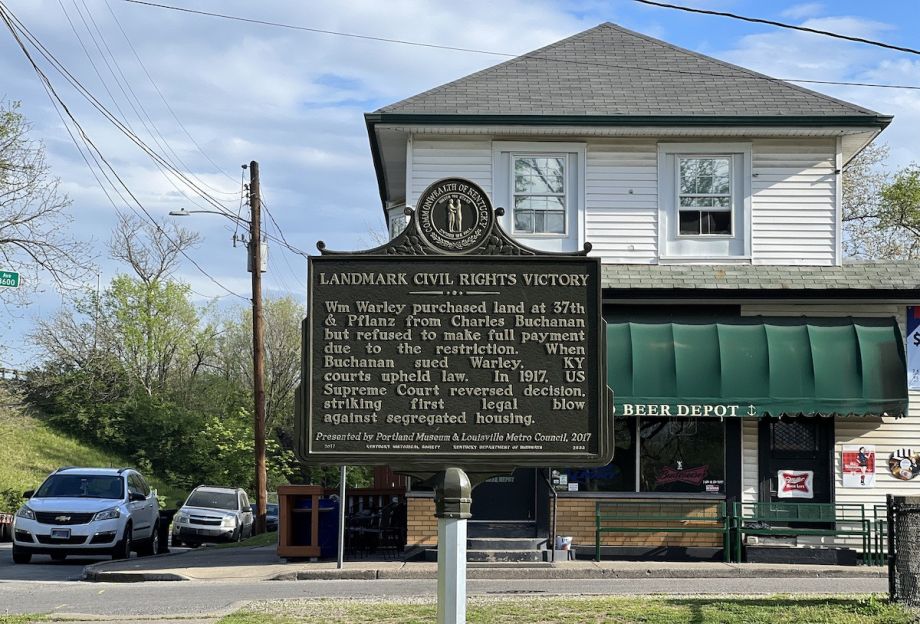
The site of Buchanan v. Warley, the historic Supreme Court case from Louisville that outlawed explicit race-based zoning. (Photo by Oscar Perry Abello)
In addition to all the above, a massive new tax-increment financing district, the largest in the state of Kentucky, now covers Louisville’s entire West End, which includes four of the eight designated historically-Black neighborhoods in the proposed ordinance. As those dollars get doled out, supporters of the Historically Black Neighborhoods Ordinance say the legislation would help ensure those dollars go to projects that actually benefit the West End’s existing residents instead of displacing them.
Bellamy says residents of the California neighborhood in Louisville’s West End were some of the first major allies to connect with her Smoketown community, which is just on the other side of downtown from the West End. California is also just south of Russell, right on the southern boundary of Beecher Terrace.
“California was facing so many parallels to what we were facing in Smoketown,” Bellamy says. Residents of Smoketown, Russell and California were the driving force behind the creation of the Historically Black Neighborhoods Assembly in 2021. That body became a chapter of the Louisville Tenants Union after the latter formed last year.
It’s not just renters who are in support of the Historically Black Neighborhoods Ordinance. On the far east edge of Louisville, supporter Meryl Thornton is a proud second-generation homeowner in the historically-Black Berrytown neighborhood — named for Alfred Berry, the formerly enslaved man who acquired five acres of land on which to live here in 1874. It was one of the only places where a Black person could buy land in Kentucky at the time. Thornton describes her father as a “jack of all trades” who built the home where she grew up. She now lives across the street in her own home, and her nieces currently reside in the home her father built.
As an English professor at the historically-Black Simmons College of Kentucky, Thornton knew music professor Jecorey Arthur as a colleague before Arthur was elected in 2020 as the youngest member of Louisville Metro Council in history. Arthur is now the primary sponsor of the Historically Black Neighborhoods Ordinance. The bill started out in its early drafts as a Google Doc, allowing residents to provide feedback and comments safely during the COVID-19 pandemic.
Thornton cites multiple reasons she supports the Historically Black Neighborhoods Ordinance. She’s hopeful about its provision to give residents and businesses in designated neighborhoods priority for city grant programs to help with costs of maintaining or modernizing homes and storefronts or offices. She says until now, Berrytown has often been shut out of such programs because it happens to share ZIP codes with other areas nearby that are much wealthier. She hopes that the bill can help direct these programs to Black homeowners who have been targeted for years by speculators, who bombard them with cash offers to buy homes at far below market value and flip them at prices unattainable for existing residents nearby.
“Over the last several years I started receiving postcards and even phone calls about purchasing my house, and there are a lot of homeowners in the neighborhood receiving these offers,” Thornton says. “My plan is to hold on to my house and not sell it. In Black culture, families build or buy houses with intentions to stay there.”
When the time does come to make some hard choices, as many in Berrytown age out of being able to take care of their own homes, Thornton is hopeful that the Historically Black Neighborhoods Ordinance can help direct public resources to support the development of rental housing in the area that the elderly can afford on fixed incomes without having to leave the community they’ve come to know and love.
Thornton says recent apartment developments in or near Berrytown aren’t priced to meet those needs, while also reducing tree cover and increasing traffic. Pricing out Berrytown’s elders would be a huge loss. The neighborhood has an annual homecoming celebration every August that brings back multiple generations. There’s also the Berrytown Cemetery, which is maintained by volunteer labor from the community, including Thornton, whose parents are buried there.
Thornton has seen public resources previously going to support existing Black communities instead of displacing them. The home she owns today, she says, was built with public dollars in the 1990s, and she got to purchase it on the condition she would stay at least five years.
“If something were to happen to me, I could not afford to move into an apartment out here because the rent will be about twice what my monthly mortgage payment is,” Thornton says. “We don’t want to be priced out of the neighborhood. The many older people in the neighborhood, they really can’t afford to go anywhere else.”
This article is part of The Bottom Line, a series exploring scalable solutions for problems related to affordability, inclusive economic growth and access to capital. Click here to subscribe to our Bottom Line newsletter.

Oscar is Next City's senior economic justice correspondent. He previously served as Next City’s editor from 2018-2019, and was a Next City Equitable Cities Fellow from 2015-2016. Since 2011, Oscar has covered community development finance, community banking, impact investing, economic development, housing and more for media outlets such as Shelterforce, B Magazine, Impact Alpha and Fast Company.
Follow Oscar .(JavaScript must be enabled to view this email address)



